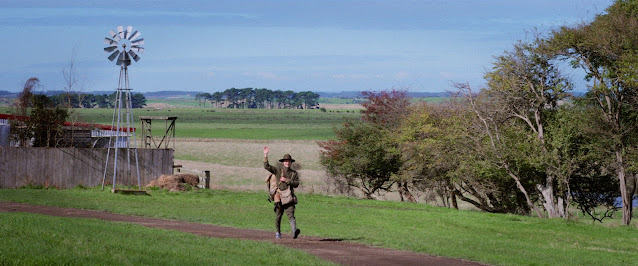Eyes Wide Shut (1999)
You know, Eyes Wide Shut is a classic example of the kind of film that you grow into. I watched it many years ago at a very different time in my life, and while I enjoyed it, it was something of an enigma. I imagine my first experience was the same as a lot of people’s; I was sold a conspiracy horror film and ended up with something more akin to a psychosexual noir film, one with very little actual sex depicted despite its reputation, then and now. An early edited version of the film claims to insert extra CG people into shots to “cover genitalia” but this is a lie: there is no genitalia shown in any version of the film. You can see pubic hair a few times, but nothing beyond that.
So the near-pornographic qualities the film is often associated with are bogus, and really, so is the whole conspiracy plot (if that’s all you’re here for, at any rate) So, what exactly does that leave us with? Well, what we do get is a Kafka-esque noir that examines a number of very adult themes in strange, iconic ways (like, for instance, the infamous orgy scene.)
But let’s back up a moment. This is a film that takes its time, and which follows a loose, initially rambling narrative that sees our hero, a Dr. Harford (played by Cruise) following a thread of illicit desire that resolves over a series of ever-stranger encounters that will challenge his attitudes and beliefs about women, sex, and the institutions that bind us together. Or something like that. All of this is sparked by nothing more than an innocent couple’s game where Harford and his hot wife smoke pot and end up revealing things to one another they probably shouldn’t have. Harford reveals a lack of understanding of women; his wife reveals that she once contemplated having an affair with a stranger.
Needless to say, Harford needs some fresh air after that one, and from there, over the course of one night, he bounces from one bizarre situation to another. Just about everyone he speaks to wants to instantly drop everything and fuck him, male or female. Well, not counting the ones who shout homophobic slurs at him. All of these encounters relate loosely to the overall themes, if not so much to each other. It’s a very literary sort of story and it’s entirely unclear where things are headed until Harford is alerted by an old friend to a veeery secret party that he’s scheduled to perform at later that night. One where he’s blindfolded on the way there and throughout his entire performance so that he’s never sure where he is…
Where the rainbow ends
Yes, the “party scene” is the centerpiece of the film; a big, tense, lavish setpiece that looms large over the second half of the film, wherein Harford finds himself trying to investigate the things he saw the night before, hitting one dead end after another. By the end, you’re wondering yourself if any of it was real. I mean, Harford’s wife’s dream sounds awfully similar to the events Harford saw. And besides, didn’t this entire adventure start with smoking pot? In bed?! Could the entire film really be a fantasy of Harford’s? Or perhaps just a cryptic dream?
That said, those coming to the film for the occult conspiracy aspect alone will likely be disappointed, as in the context of the story it really feels like something of a metaphor. It leaves a million fascinating questions hanging, like the identity of the sacrificed woman (could it be Mandy? Domino? Alice?) and the purpose for the shindig in the first place, but set within such a lengthy film, it’s clearly not the focus. Still, it's the strongest and most memorable material in the film, probably standing as some of Kubrick’s most iconic imagery ever committed to film.
Eyes Wide Shut may be fascinating and frustrating all at the same time as a narrative (though I wouldn’t have it any other way,) but technically? Technically, the film is undeniably a benchmark of modern cinema. It exudes intelligence and style, but in a breezy way that feels effortless and doesn’t call attention to itself. I love all the foggy interior shots, which subtly suggest that what we're seeing isn't real. And all those soft-focused Christmas lights in the background of many shots in the first half? Great stuff.
As one would expect from Kubrick, there are many wonderful uses of classical music, which mix wonderfully with the breathtaking sets populated with beautiful people dressed to the nines (or tastefully nude.) I love the dissonant solo piano piece that underscores all the intrigue, and I love all the shots that I could recognize from past Kubrickian masterpieces (especially the sudden reveal shot ala REDRUM.) The film isn’t just mature in the sense that it tells an adult story in a very intelligent way, it genuinely feels authoritative, like it's showing the world exactly how it's supposed to be done except that it's making it appear so effortless as to be deceiving. But what else would you expect from Kubrick, after all?
So while I’m still left with many questions on this second rewatch of the film, I’m just as fascinated by it now as I was when I first saw it. Even those who’ve seen it before might not remember just how much of a strange mix of drama, situational comedy, and conspiracy the film is, but this is part of the reason why the film has really never been matched by anything else, before or since. It stands as a perfect swan song for Kubrick’s unique style of filmmaking and for the entire decade of filmmaking it belongs to.




Comments
Post a Comment